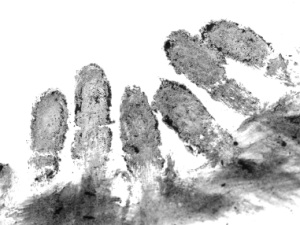RFID Helping Law Enforcement Manage Inventory, From Weapons to Evidence
![]() Inventory is notoriously loathsome: the cost of carrying inventory, the risk associated with loss, and the inventory accounting process all seem to stir up deep despair in managers and auditors alike. However, inventory control is an integral part of asset management, especially with a large quantities or highly valuable inventory.
Inventory is notoriously loathsome: the cost of carrying inventory, the risk associated with loss, and the inventory accounting process all seem to stir up deep despair in managers and auditors alike. However, inventory control is an integral part of asset management, especially with a large quantities or highly valuable inventory.
Radio frequency identification (RFID) has made asset management easier in many industries. For instance, products can be tagged with bar codes or RFID chips that track age, location, and other details associate with products in inventory.
For the Prince George’s County Police Department, keeping track of evidence seized from crime scenes used to be a time-consuming, manual process. Now, with a federal stimulus grant, the police department is putting in place its own RFID asset management system.
According to a report by Gazette.net, an online news site for the Maryland community, the Prince George's County Police Department houses evidence from crime scenes in an 800,000 square foot warehouse with approximately one million pieces of evidence. Furthermore, each item checked into evidence, depending on the type of crime scene it came from, has a mandatory retention period. With the new system, the department will automatically be notified when an item can be purged.
Unclaimed items are usually auctioned off, donated, or allocated to the police department. For instance, computer monitors would go to a station in need of an upgrade. Auctions can bring in between $20,000 and $30,000 annually, which is then allocated to the county’s Crime Stoppers program, enabling cash rewards for tips that lead to arrests.
 In criminal investigations and court proceedings, the “product in inventory” is actually evidence from the crime scene. These assets are extremely sensitive in nature, and in 2009, Bode Technology, a forensic DNA management service, developed the Bode-RFID™ System. The system tracks all kinds of evidence, even case files, and manages the chain-of-custody process. Using RFID tags, evidence is entered into a database, easily searched and monitored. The RFID tags can restrict or authorize access to certain areas of the lab where evidence should or should not be located.
In criminal investigations and court proceedings, the “product in inventory” is actually evidence from the crime scene. These assets are extremely sensitive in nature, and in 2009, Bode Technology, a forensic DNA management service, developed the Bode-RFID™ System. The system tracks all kinds of evidence, even case files, and manages the chain-of-custody process. Using RFID tags, evidence is entered into a database, easily searched and monitored. The RFID tags can restrict or authorize access to certain areas of the lab where evidence should or should not be located.
GlobeRanger, a provider of RFID, mobility, and sensor-based solutions, powered the Richardson Police Department’s intelligent asset management system using GR AWARE™. The solution allows inventory to be automatically scanned and catalogued, enabling the move away from paper records and manual entries. Accurately managing assets like weapons, uniforms, radar devices, and cell phones, helps the department better secure and deploy resources.
Similarly, at Southern Illinois University Edwardsville, the police department tracks equipment and inventory using LEID Products’ Biometrics Access Control System (BACS). The department will store items like Tasers, radios, cameras, and weapons using the new system. Each asset contains an RFID chip.
The BACS also utilizes an ID Station Kiosk, which uses a biometric (fingerprint) reader to monitor access to police department assets. Users are granted access only to items they have permission to check out, enabling better control and storage of weapons and valuable equipment. Because the Southern Illinois University Edwardsville Police Department is split between two campuses, this tracking system will enable better use and deployment of critical assets.
See related articles:
RFID Technology Improves Evidence Management in Crime Labs
RFID Tags Prevent Infant Abductions
Airport's RFID Access Control Solution Weathers Extreme Temperatures
{jcomments on}
